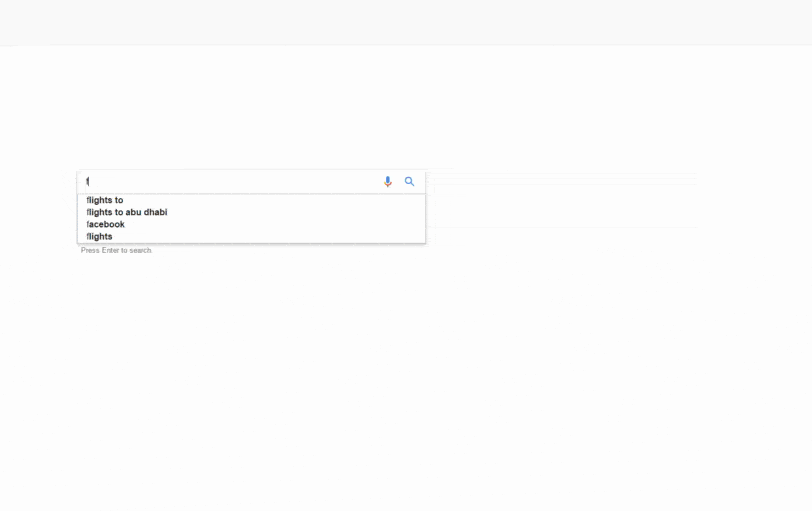
Diese Daten müssen von einem Nutzer freiwillig eingegeben werden, entweder in einer Suchmaschine oder im Buchungsablauf einer Fluggesellschaft. Diese Daten können verwendet werden, um die browserbezogenen Informationen zu ergänzen und dem Nutzer die relevanteste Erfahrung zu bieten.
Im obigen Beispiel gibt der Nutzer "Flüge nach Abu Dhabi" in Google ein, wobei das Ziel ("nach") angezeigt wird, an dem er interessiert ist ("Abu Dhabi").
Fortsetzung des Buchungsflusses nach EtihadDer Nutzer ist auf der Seite "Flüge nach Abu Dhabi" (vom Nutzer eingegebene Daten) gelandet, auf der alle Abflugorte in den Vereinigten Staaten (browserbezogene Informationen) angezeigt werden. Beachten Sie, dass hier kein Abflugsort angegeben ist, da der Nutzer keine klare Absicht bezüglich seines Abflugsortes gezeigt hat.
Die nächsten vom Benutzer eingegebenen Datenpunkte sind diejenigen, die weitere Angebote speziell für diesen Benutzer anvisieren: "MIA" (Abflugort); "5/9/2017" (Abflugdatum); "5/17/2017" (Rückflugdatum); "1 Reisender" (Anzahl der Reisenden); "Economy" (Tarifklasse).
Mit diesem letzten Datensatz ist die Buchungsmaschine von Etihad in der Lage, auf der Grundlage der Kombination von browserbezogenen Informationen und vom Benutzer eingegebenen Daten hyperrelevante Flugoptionen anzubieten.